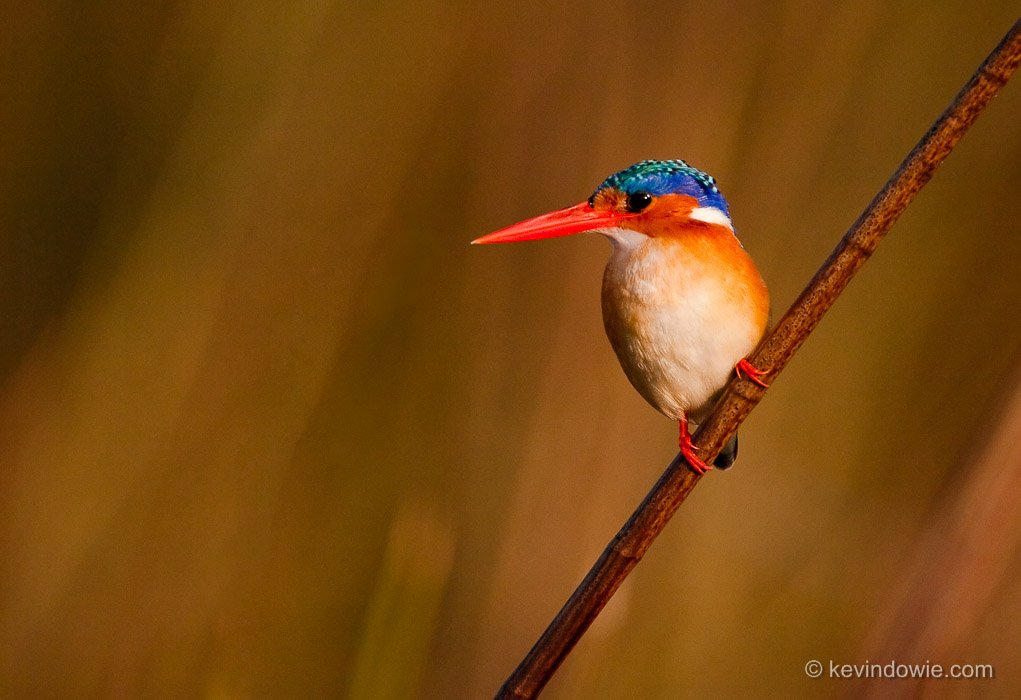In July, 2009, I took part in a photographic safari/workshop through the Okavango Delta region of Botswana. The safari involved 3 nights at each of 4 tented camps the first of which was Kwetsani Camp situated to the west of the Moremi Game Reserve.
Kwetsani Camp
Kwetsani is regarded as a “wet” camp as it is alongside a broad flood plain which at the time of my visit was indeed flooded due to favourable weather in the preceding months, with excellent rainfall recorded in the highlands of Angola feeding into the rivers which form the delta.
On our first afternoon, we took to small motorized boats and explored the waterways and channels around Kwetsani which meant some good sightings of several species of waterbirds including the beautiful malachite kingfisher. In the warm late afternoon light, we saw several of these kingfishers perched on, and flying between, reeds at the water’s edge.
Photographing Kingfishers
Although frequently seen, the challenge was getting clear shots of the birds as they flit from perch to perch between the closely packed reeds. A wide aperture was used here which gives a narrow depth of field and throws the background out of focus, an effect I like, particularly with birds. The head position of the bird means that the narrow depth of field is still enough to get everything that’s important in focus. Compositionally, the bird is slightly off centre of the image and looking back into the negative space of the left of the frame. I’m usually pleased when there is a strong diagonal element in the frame and the perch here provides that.
Camera handling
One frustration of using the 5D, I found, was that it’s easy to accidentally turn the quick control dial on the rear of the camera without being aware of it and hence unintentionally deploy exposure compensation. Such was the case here where the image was unintentionally underexposed. With such small and elusive subjects as these, telephoto lenses were essential with the handling issues involved in using the long lens from an, albeit gently, moving boat to be considered.
The imperfect histogram
With the histogram being biased to the left side, it was necessary to increase the exposure by about 1.6 stops in the RAW conversion. The result was that noise started to get noticeable in the background shadow areas. I used Noise Ninja at the 5D profiled settings to effectively clean up the shadows. This is the first time I’ve ever used this software and, even at this early stage, I think it will prove to be a worthwhile investment.
In the end, I was delighted to get this image and consider it to be one of my best from the trip.

